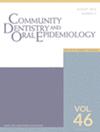Expanding HIV testing beyond specialized services has been a key strategic approach to eliminating the transmission of HIV. In recent years, dental settings have been identified as offering an opportunity for delivering point of care HIV testing (POCT) interventions. Intervention components and implementation strategies have varied across studies and there is uncertainty about the prevalence of undiagnosed HIV in the dental patient population. Therefore, this systematic review aimed to synthesize the HIV testing outcomes of intervention studies, identify the core components of POCT interventions implemented in dental settings; and understand the barriers and facilitators to intervention implementation.
A mixed-methods systematic review was undertaken. Two authors reviewed abstracts and full papers for inclusion and appraised the studies using the Mixed Methods Appraisal Tool. A convergent integrated mixed methods study design underpinned the synthesis. Outcomes were presented using descriptive statistics. Intervention components were mapped to the Template for Intervention Description and Replication (TIDieR) checklist. Barriers and facilitators were described using a narrative thematic analysis.
POCT was offered to 22 146 dental patients, 62.5% accepted POCT. Intervention studies that reported higher uptake of testing utilized a dedicated dental or researcher staff member to provide testing, integrated testing and provided results within the routine dental appointment and adopted a provider-initiated universal approach to offering testing. Six themes emerged that were pertinent to the barriers and facilitators to HIV testing in dental setting.
POCT uptake in dental settings was comparable with other non-specialized health settings. Key to the operationalization of the intervention were perceptions about its value and relevance to the dental patient population, attitudes toward the intervention, logistical barriers to its implementation, the risk of HIV testing stigma to the patient-practitioner relationship and maximising the fit of the intervention within the constraints of the dental setting.



